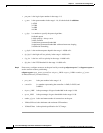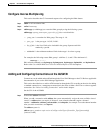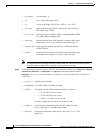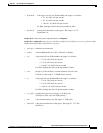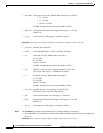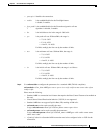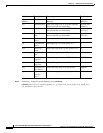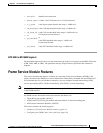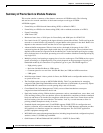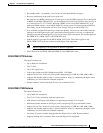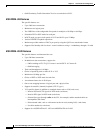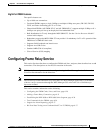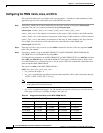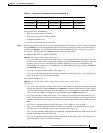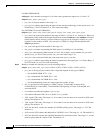
6-24
Cisco MGX 8230 Edge Concentrator Installation and Configuration
Release 1.1.31, Part Number 78-11215-03 Rev. B0, May 2001
Chapter 6 Card and Service Configuration
Frame Service Module Features
Summary of Frame Service Module Features
This section contains a summary of the features common to all FRSM models. The following
sub-sections also contain summaries of the features unique to each type of FRSM.
All FRSMs support:
• Frame Relay-to-ATM Network Interworking (NIW) as defined in FRF.5.
• Frame Relay-to-ATM Service Interworking (SIW) with or without translation as in FRF.8.
• Frame Forwarding.
• ATM Frame-UNI.
• Maximum frame sizes of 4510 bytes for Frame Relay and 4096 bytes for ATM-FUNI.
• Per-virtual-circuit (VC) queuing in the ingress direction (toward the cell bus). Traffic arriving at the
network on a connection has a dynamically assigned buffer at the entrance to the shelf. Buffer size
depends on the amount of traffic and the service-level agreement (SLA).
• Advanced buffer management. When a frame arrives, the depth of the queue for the LCN is
compared against the peak queue depth scaled down by a specified factor. The scale-down factor
depends on the amount of congestion in the free buffer pool. As the free buffer pool begins to empty,
the scale-down factor is increased, preventing an excessive number of buffers from being held up by
any single LCN.
• Multiple, priority-level queuing to support class of service on the egress. The FRSM services egress
queues according to a weighted priority. The priority depends on the percentage of logical port
bandwidth needed by all connections of a particular type on a port. The FRSM supports a:
–
High-priority queue
–
Real-time Variable Bit Rate (rt-VBR) queue
–
Common queue for non-real-time Variable Bit Rate (nrt-VBR) and ABR connections
–
UBR queue
• Initial burst per channel. After a period of silence, the FRSM sends a configurable number of bytes
at a peak service rate.
• The ForeSight option (except on MGX-FRSM-HS1/B). This Cisco mechanism for managing
congestion and optimizing bandwidth monitors the utilization of ATM trunks. It proactively adjusts
the bandwidth for connections to avoid queuing delays and cell discards.
• Consolidated Link Layer Management (CLLM), an out-of-band mechanism to transport
congestion-related information to the far end.
• Dual leaky bucket policing. Within the basic parameters such as committed burst, excess burst, and
CIR, incoming frames go into two buckets: those to be checked for compliance with the committed
burst rate and those to be checked for compliance with the excess burst rate. Frames that overflow
the first bucket go into the second bucket. The buckets “leak” by a certain amount to allow for
policing without disruption or delay of service.
• Standards-based management tools. Each FRSM supports SNMP, TFTP for configuration and
statistics collection, and a command line interface. The Cisco WAN Manager application provides
full graphical user interface support for connection management. The CiscoView application
provides equipment management.
• MGX 8800 series network management functions, including image download, configuration upload,
statistics, telnet, UI, SNMP, trap, and MIBs.
• OAM features: LMI and Enhanced LMI (ANNEX A, ANNEX D, Strata LMI).



